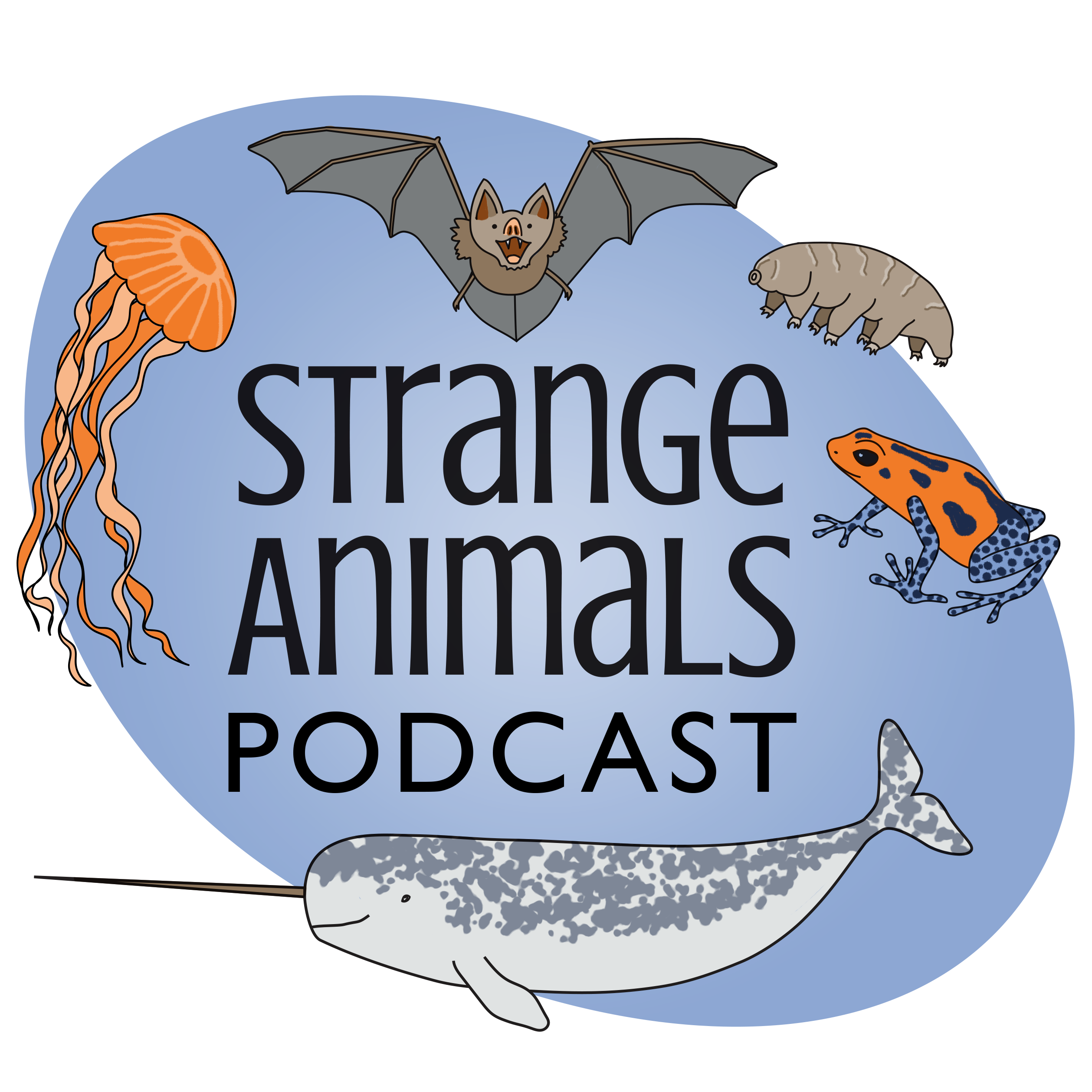Episode 372: Mystery Bovids

Thanks to Will and M\xe5ns for their suggestions this week! Let's learn about some mystery bovids, or cows and cow relations!\n\nFurther reading:\n\nA Book of Creatures: Song\xf2mby\n\nKouprey: The Ultimate Mystery Mammal\n\nA musk ox (top) and a wild yak (bottom):\n\n \n\nA young kouprey bull from the 1930s:\n\n\n\nSculpture of two grown kouprey bulls [photo by Christian Pirkl - Own work, CC BY-SA 4.0, https://commons.wikimedia.org/w/index.php?curid=73848355]:\n\n\n\nA banteng bull (with a cow behind him) [photo taken from this site]:\n\n\n\nA qilin/kilin/kirin looking backwards:\n\n\n\nThe "purple" calf:\n\n\n\nThe Milka purple cow:\n\n\n\nShow transcript:\nWelcome to Strange Animals Podcast. I\u2019m your host, Kate Shaw.\nThis week we\u2019re going to learn about some mystery bovids, or cow relations, suggested by Will and M\xe5ns, whose name I am probably mispronouncing.\nWe\u2019ll start with a mystery about the musk ox, which is not otherwise a mysterious animal. M\xe5ns emailed about reading a children\u2019s book about animals that had a picture of a musk ox in the part about the Gobi Desert. The problem is, the musk ox is native to the Arctic and was once found throughout Greenland, northern Canada, Alaska, and Siberia. So the question is, was the book wrong or are there really musk oxen in the Gobi Desert?\nWe\u2019ll start by learning about the musk ox and the Gobi Desert. The musk ox can stand up to 5 feet tall at the shoulder, or 1.5 meters. It has thick, dense, shaggy fur all over, a tiny tail only about four inches long, or 10 cm, and horns that curve down close to the sides of its head and then curve up again at the ends.\nThe musk ox is well adapted to the cold, which isn\u2019t a surprise since it evolved during the ice ages. Its ancestors lived alongside mammoths, woolly rhinos, and other Pleistocene megafauna. Like many cold-adapted animals, its fur consists of a thick undercoat that keeps it warm, and a much longer layer of fur that protects the softer undercoat. The undercoat is so soft and so good at keeping the animal warm in bitterly cold temperatures that people will sometimes keep musk oxen in order to gather the undercoat in spring when it starts to shed, to use for making clothing and blankets. But it\u2019s definitely not a domesticated animal. It can be aggressive and extremely dangerous.\nA warm coat isn\u2019t the musk ox\u2019s only cold adaptation. The hemoglobin in its blood is able to function well even when it\u2019s cold, which isn\u2019t the case for most mammals. It lives in small herds that gather close together in really cold weather to share body heat, and if a predator threatens the herd, the adults will form a ring around the calves, their heads facing outward. Since a musk ox is huge, heavy, and can run surprisingly fast, plus it has horns, if a wolf or other predator is butted by a musk ox it might end up fatally injured.\nThe main predator of the musk ox is the human, who hunted it almost to extinction by the early 20th century. It was completely extirpated in Alaska but was reintroduced there and in parts of Canada in the late 20th century. Similarly, it was reintroduced to parts of Siberia and even parts of northern Europe, although not all the European introductions were successful.\nSo what about the Gobi Desert? It\u2019s nowhere near the Arctic. Not all deserts are hot. A desert just has limited rainfall, and the Gobi is a cold desert. Parts of the Gobi are grasslands and parts are sandy or rocky, and it covers a huge expanse of land in central Asia, mainly divided between northern China and southern Mongolia. Some parts of it do get limited rainfall in the summer and limited snowfall and frost in the winter, but for the most part it\u2019s dry and therefore has limited vegetation for animals to eat.\nAnimals do live in the Gobi, though. The wild Bactrian camel, which has two humps, is found nowhere else in the world and is critically endangered. The Mongolian wild ass lives in parts of the Gobi, as do several species of antelope and gazelle,